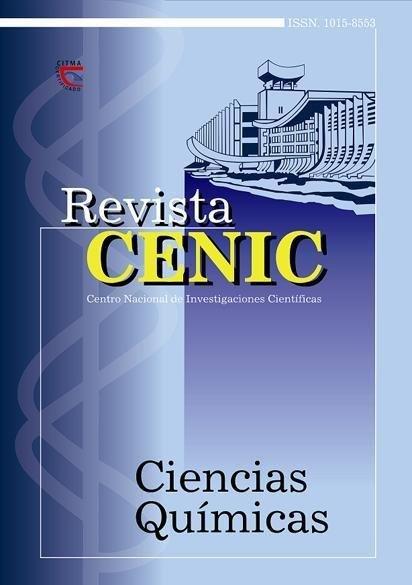Productos de la policondensación del ácido cítrico, el etilenglicol y alcoholes alifáticos de cadena larga
Abstract
The polycondcnsation of citric a cid with ethylene glycol was carried out in the presence of a long-chain aliphatic alcohol (n-decyl, n-dodecyl and n-octadecyl alcohol). The proportions of the reagents were chosen so that the system does not reach the gel point. Under che experimental conditions of the synthesis oligomers but no polymers were obtained. These products form colloidal stable dispersions in water; although, as the size of the chain of the aliphatic alcohol increases the formation of che sol is more difficult. The characterization of thc products as well as che verification of the addition of che aliphatic alcohol to the molecules of che oligomer was done using 1H NMR spectroscopy. The products of the polycondensation of citric acid, ethylene glycol and the aliphatic alcohols begin to decompose above 153 ºC. The temperature of decomposition is not sensitive to the presence of small amounts of aliphatic groups derived from the lineal alcohol, or to the increase of their length. When hydroxyl groups are the end groups of oligomer chains, che products have a higher thermal stability than those possessing terminal caiboxyl groups.

Downloads
Published
How to Cite
Issue
Section
License
Copyright (c) 2000 Copyright (c) 2000 Revista CENIC Ciencias Químicas

This work is licensed under a Creative Commons Attribution-NonCommercial-ShareAlike 4.0 International License.
Los autores que publican en esta revista están de acuerdo con los siguientes términos:
Los autores conservan los derechos de autor y garantizan a la revista el derecho de ser la primera publicación del trabajo al igual que licenciado bajo una Creative Commons Atribución-NoComercial-CompartirIgual 4.0 que permite a otros compartir el trabajo con un reconocimiento de la autoría del trabajo y la publicación inicial en esta revista.
Los autores pueden establecer por separado acuerdos adicionales para la distribución no exclusiva de la versión de la obra publicada en la revista (por ejemplo, situarlo en un repositorio institucional o publicarlo en un libro), con un reconocimiento de su publicación inicial en esta revista.
Se permite y se anima a los autores a difundir sus trabajos electrónicamente (por ejemplo, en repositorios institucionales o en su propio sitio web) antes y durante el proceso de envío, ya que puede dar lugar a intercambios productivos, así como a una citación más temprana y mayor de los trabajos publicados (Véase The Effect of Open Access) (en inglés).













